Sony X85L is a model from 2023 that will continue to be available in the 2024 range from the Japanese manufacturer. Its biggest advantage is the Google TV system. It currently provides the greatest access to applications, so we don’t have to worry about missing any of our favourite apps. The intuitive interface and voice control feature using Google Assistant make daily use of the television convenient and modern. As for picture quality, Sony X85L performs well. Thanks to local dimming (albeit with a very mediocre number of zones), black levels look quite decent. Additionally, its fairly high brightness allows for comfortable TV viewing during the day, even in well-lit rooms. Moreover, the television offers a program recording feature from built-in tuners, which is a great convenience for those wanting to control what and when they watch. In terms of motion smoothness, X85L also does not disappoint. The 120 Hz panel and Motionflow system provide smooth display of dynamic scenes, which will satisfy both movie lovers and sports fans. The television is also equipped with a range of features for gamers, including VRR, Game Bar, and G-Sync support, making it an attractive choice for gaming enthusiasts. Of course, the television is not without its flaws. The lack of HGiG support and high input lag in Dolby Vision mode may be disappointing for more demanding gamers. Additionally, the compromise between font readability and smoothness of the image when connected to a PC may not appeal to everyone. Nevertheless, Sony X85L is a decent piece of equipment that is particularly worth considering if it can be purchased on sale.
- Matching (Score)
- Our verdict
- TV appearance
- Where to buy
- Contrast and black detail
- HDR effect quality
- Factory color reproduction
- Color reproduction after calibration
- Smoothness of tonal transitions
- Image scaling and smoothness of tonal transitions
- Blur and motion smoothness
- Console compatibility and gaming features
- Input lag
- Compatibility with PC
- Viewing angles
- TV efficiency during daytime
- Details about the matrix
- TV features
- Apps
- Playing files from USB
- Sound
Sony X85L vs TCL C7K / QM7K
Direct compare
X85L
C7K / Q7C / MQLED85K / C79K / C71K / QM7K

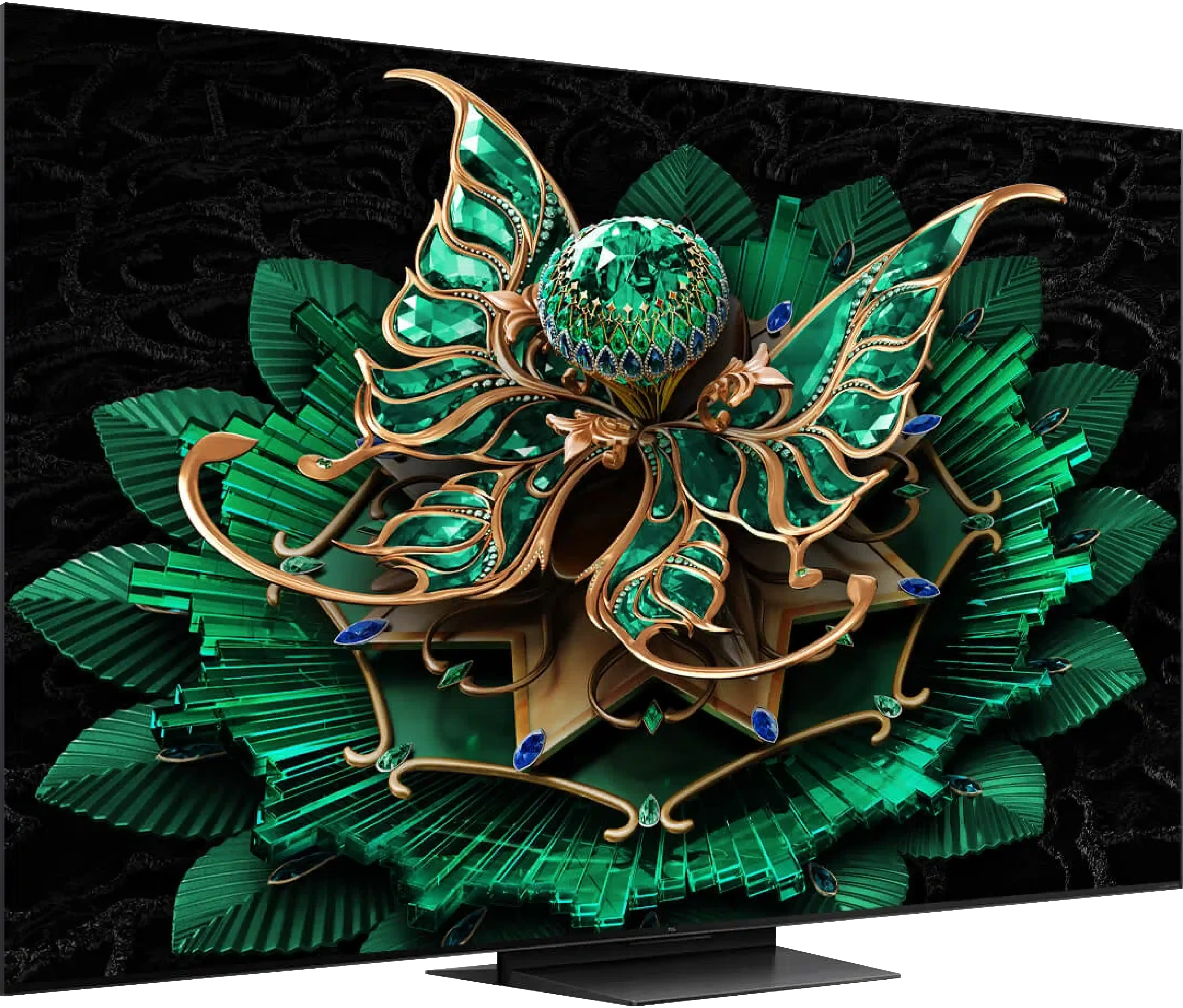
Resolution: 3840x2160
System: Google TV
Model year: 2023
Complete the survey to find out the result

Panel type: LCD VA
Resolution: 3840x2160
System: Google TV
Model year: 2025
Complete the survey to find out the result

Overall rating
7.0
7.1
Movies and series in UHD quality
6.4
6.7
Classic TV, YouTube
6.3
6.5
Sports broadcasts (TV and apps)
6.6
6.4
Gaming on console
7.8
8.5
TV as a computer monitor
5.6
8.4
Watching in bright light
6.5
6.1
Utility functions
8.3
7.7
Apps
9.6
9.6
Sound quality
6.9
7.0
Complete the survey to find out what fits your preferences
Advantages
Expanded Google TV System
Decent contrast
Good brightness
Gaming features - VRR, Game Bar and G-Sync
Base with adjustable legs
Very good black - VA panel with a large number of Mini-LED zones
High brightness in HDR - over 1000 nits
Great for gamers - HDMI 2.1, low input lag, VRR, ALLM etc.
Good motion fluidity - 144Hz panel
Support for multiple HDR formats: HDR10, HDR10+, Dolby Vision
Google TV operating system with access to a huge app base
Pleasant sound from built-in speakers
Disadvantages
No support for HGiG, Dolby Vision with high input lag
Font readability issues on PC at 120 Hz
Only 2 HDMI 2.1 ports - one of which serves as eARC
Google TV can have minor stutters
No USB recording and PiP function
Our verdict
There are TVs that come for testing, and you immediately think: "oh, just another average one, probably like many others." And essentially... that's true. The TCL C7K doesn't try to dethrone OLEDs, nor does it scream "revolution!" from the box. And yet, after a few days of testing, it's hard not to think: "wow, this is really good gear." And that's exactly what the C7K is. The biggest advantage of the C7K is the decent picture at a reasonable price – MiniLED and quantum dots do their job here. The colours are vibrant, the brightness is satisfactory, the contrast impresses, and with the right settings, you can truly enjoy viewing in the best quality. The second strong point is motion smoothness – both in sports and gaming. Support for HDMI 2.1, variable refresh rate, 144 Hz, and a whole heap of other features makes gaming on this TV a pure pleasure. On top of that, there's Google TV, which – despite some minor shortcomings – offers access to almost an endless library of apps. Voice control, quick access to YouTube, Netflix, AirPlay support – it has everything you need for daily use. Are there downsides? Of course. The Google TV system can have moments of "hesitation," and MiniLED – like any MiniLED – can stumble on very challenging movie scenes. But these are details. After all, the C7K is a mid-range model – and in this class, it performs remarkably well. So if you’re looking for a reasonably priced, modern TV with Google TV that looks good, works well, and sounds pretty decent without breaking the bank – the TCL C7K definitely deserves your attention.
TV appearance





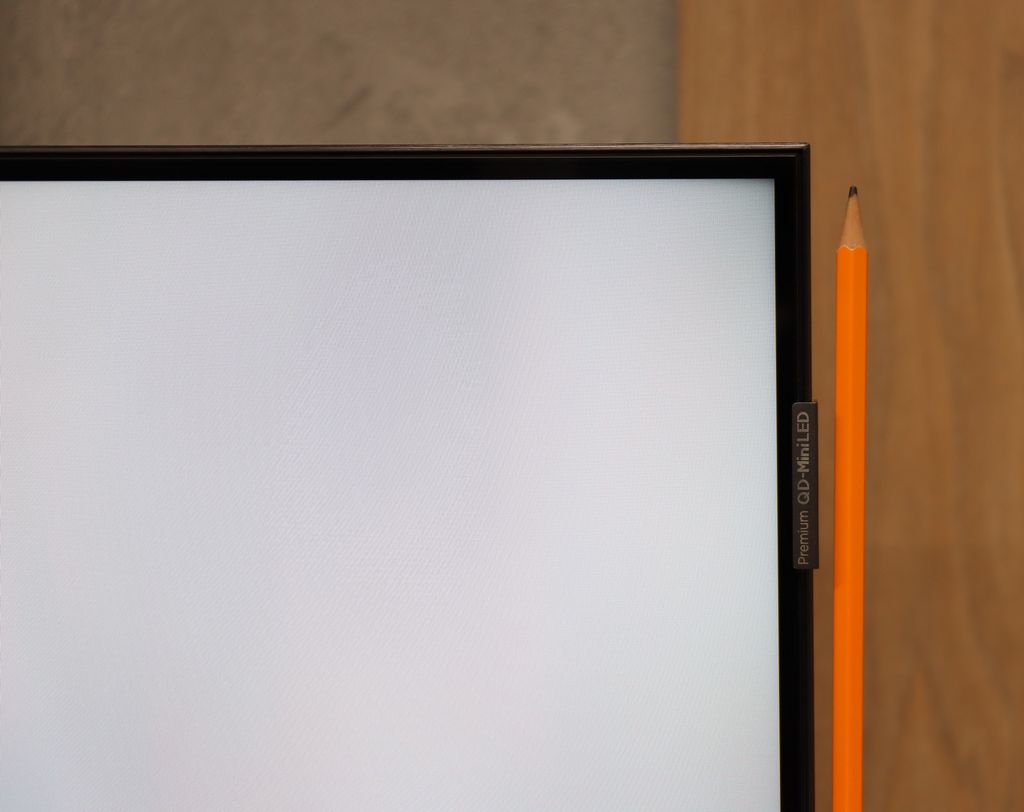
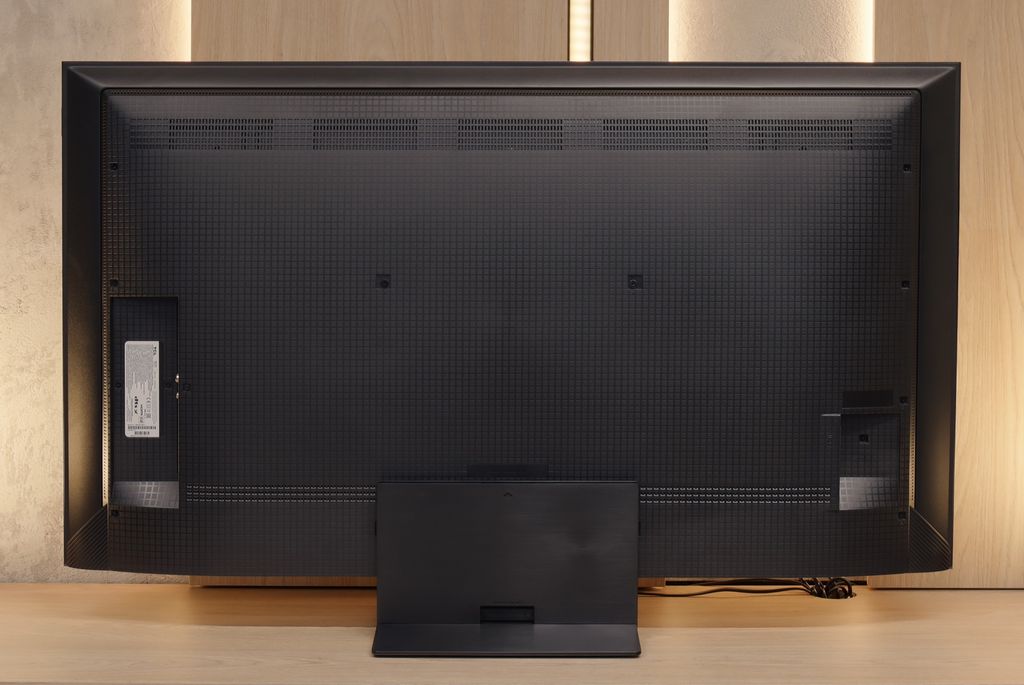
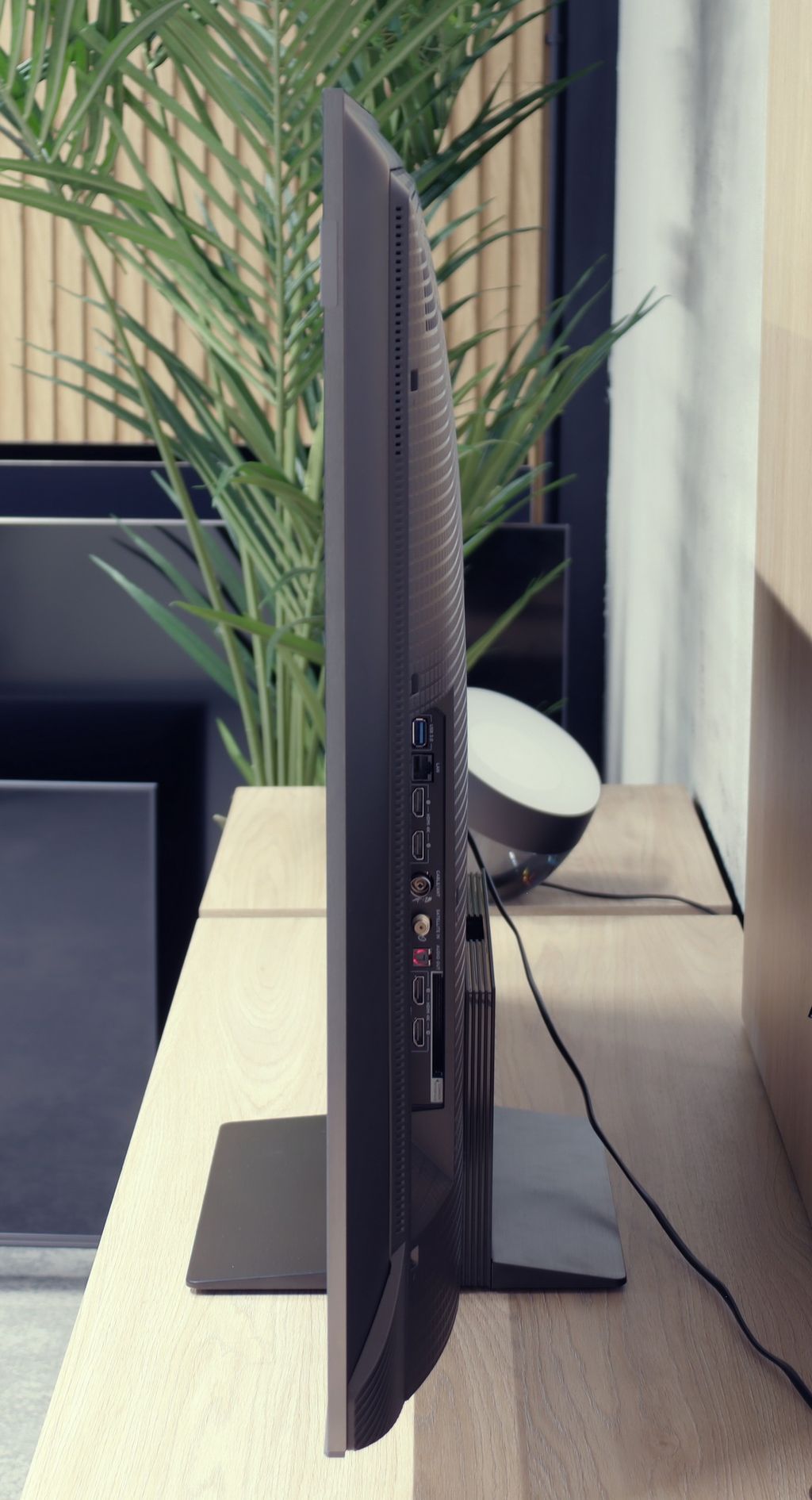
Contrast and black detail
6.7/10
7.1/10
Local dimming function: Yes, number of zones: 24 (4 x 6)
Local dimming function: Yes, number of zones: 336 (14 x 24)
Contrast:

Result
8,700:1

Result
7,800:1

Result
19,200:1

Result
5,750:1

Result
5,150:1

Result
161,000:1

Result
18,750:1

Result
13,150:1

Result
6,300:1

Result
4,200:1
Halo effect and black detail visibility:

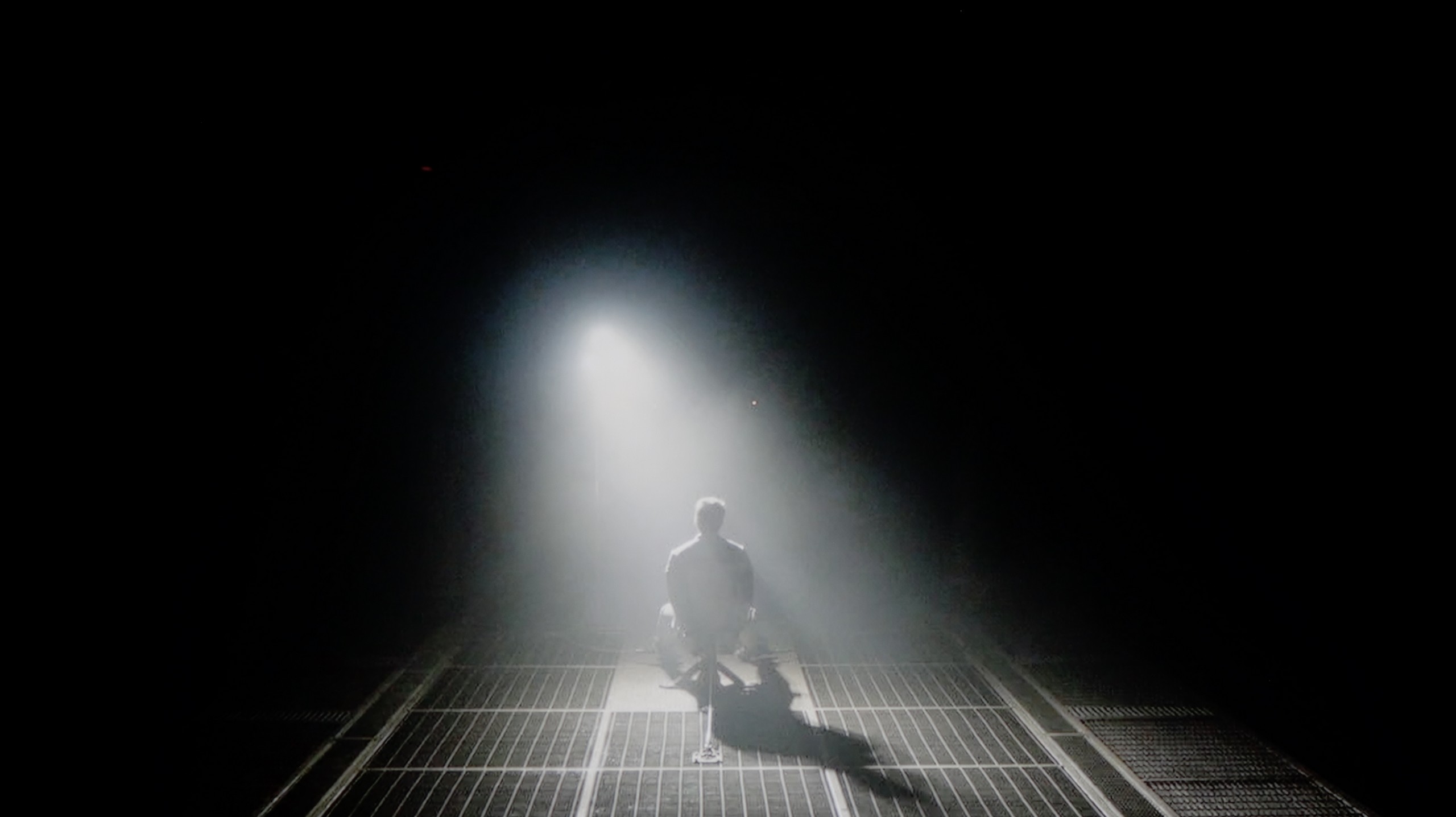
The Sony X85L television is equipped with a VA panel, which offers quite decent contrast on its own. Additionally, this model features local dimming technology – in the 55-inch version, it includes 24 zones. Although this number isn’t impressive, it naturally increases with the size of the television. The contrast in the X85L is good, though not the best, especially compared to other televisions also equipped with advanced local dimming technology. Results at a level of 8000:1 are satisfactory, but they average out against the competition. In some cases, such as the third scene from the movie Arrival, the contrast is promising and performs quite well. This is thanks to the very good dimming algorithm that Sony has been using in its televisions for years. Unfortunately, due to the limited number of local dimming zones, the television struggles with noticeable blooming, which can be seen in scenes with the helicopter from the movie Sicario 2.
The 50-inch TCL C7K we tested surprised us right from the start – it's the smallest model in the series, yet it's equipped with a VA panel with MiniLED backlighting and – get this – as many as 336 dimming zones. By comparison, many far larger TVs from higher tiers would be happy to boast such a number. Here we have it in a 50-inch version. Sounds promising, right? So how does this translate into real viewing experiences? In the overwhelming majority of tested scenes – very well. The contrast was high enough that in measurements it reached even six-figure values, which in practice means very deep blacks and well-separated highlights. In scenes from films like The Revenant or Oblivion, the effect was impressive, matching the best LCD screens in this class.
Not everything, however, went perfectly. Despite the impressive number of zones, managing them wasn't always exemplary. In more complex scenes, where small light sources or a high level of detail appear, the TV had issues with the so-called halo effect (a glowing aura around bright objects) or overly aggressive dimming of the image. In such situations, contrast could either collapse due to overexposure of some zones or, conversely – details in bright areas vanished because the zones were suppressing light too much. Nevertheless, it's worth emphasising that in the vast majority of scenes the contrast was more than satisfactory. And considering the size of the TV and the price, the final effect will satisfy not only average users.
HDR effect quality
5.8/10
5.4/10
Luminance measurements in HDR:

Result
736 nit

Result
415 nit

Result
535 nit

Result
249 nit

Result
599 nit

Result
1051 nit

Result
185 nit

Result
454 nit

Result
200 nit

Result
836 nit
Scene from the movie “Pan” (about 2800 nits)


Scene from the movie “Billy Lynn” (about 1100 nits)


Static HDR10


Dynamic: Dolby Vision
Dynamic: Dolby Vision


HDR luminance chart:
TCL C7K / QM7K
Luminancja HDR
Luminance of RGB colors
Sony X85L
Luminancja HDR
Luminance of RGB colors
The Sony X85L TV offers solid HDR performance with a brightness of 750 nits, which is sufficient to enjoy vibrant effects. In scenes of moderate difficulty, such as the first, third, or fifth test scenes, a brightness of around 600 nits allows you to fully experience the HDR effect. Unfortunately, in more demanding segments, like the scene from the film Sicario 2, the TV reveals its limitations. Drops in brightness to 250 nits make the HDR effect lose its impressive quality and resemble ordinary SDR. Nonetheless, it is worth highlighting the very good coverage of the DCI-P3 colour palette at 95%, which definitely deserves praise and positively impacts the overall image quality.
TCL C7K is one of the brightest MiniLED TVs in its price class. Under optimal testing conditions, the screen can achieve over 1200 nits, resulting in impressive, at times dazzlingly bright scenes. And most importantly – this isn’t just a theory from measurements. In practice, even the brightest moments in movies can shine with true cinematic grandeur. Home HDR cinema fans should be really pleased.
The impression is fantastic, especially in scenes with large areas of brightness – a white sky, explosions, sun reflections, or magical sunsets can surprise with an intensity of light that rarely appears in this price range.
However, things get a bit worse when more challenging scenarios appear on the screen, previously described in terms of contrast – that is, images full of details, with small bright elements on a dark background. In such cases, the C7K often opts to preserve black at the expense of brightness. An example? Scenes from movies like Sicario 2 or Life of Pi, where small light sources (like a distant lantern) may become less visible, and details in the lights are simply dimmed or blend into the background.
For many viewers, this may be an acceptable compromise – as we achieve deep blacks and pleasant image depth. Nevertheless, it’s important to recognise that the visibility of small details in bright areas is not this model's strong suit. It’s simply a technological limitation that still exists – even with over 300 zones.
Factory color reproduction
5.8/10
6/10


Factory Mode
After calibration
The television Sony X85L has been tested in IMAX Enhanced mode, which, while associated with world-class cinema, does not guarantee an image consistent with the director's intent. The main issue is the white balance – there is a noticeable strong dominance of blue and significant deficiencies in red. As a result, the image becomes unnaturally cool and looks artificial. Errors in colour reproduction were confirmed by the Colour Checker test, which showed significant discrepancies – colours were "scattered" like shots from a rifle, and only a few samples hit the target values. This clearly shows that the precision of colour reproduction leaves much to be desired.
The brightness of the image is one of the positive features of the television. The gamma for HD content is at an acceptable level, although minor errors occur, but generally it is quite good. However, the issue remains the brightness characteristic for 4K materials, controlled by the EOTF curve. It is evident here that very small, bright elements of the image are too dim, which is the result of the limited number of backlight zones due to the design of the television.
A new feature in TCL televisions for 2025 is the long-awaited Filmmaker mode, which until now has been found in most competing brands. This is great news, as this mode is considered the most faithful to the original vision of the creators and is often recommended by enthusiasts of quality visuals. Unfortunately – as is often the case – the mere presence of it does not guarantee perfection. The Filmmaker mode in the TCL C7K is not without its faults. There are issues with inaccurate white balance, particularly a slight blue tint that resulted in cool, somewhat greyish skin tones. But that wasn’t the biggest problem. The main complaint was excessive brightness exposure, which is clearly visible on gamma and EOTF charts. The image was simply too bright, at times even blown out, which affected not only the texture of scenes but also the overall viewing experience. Some details were just lost, and the entire image looked as if someone had overdone the brightness slider. As always, we decided to see what could be squeezed out of it after calibration. And this is where things started to get really interesting…
Color reproduction after calibration
7.5/10
7.5/10

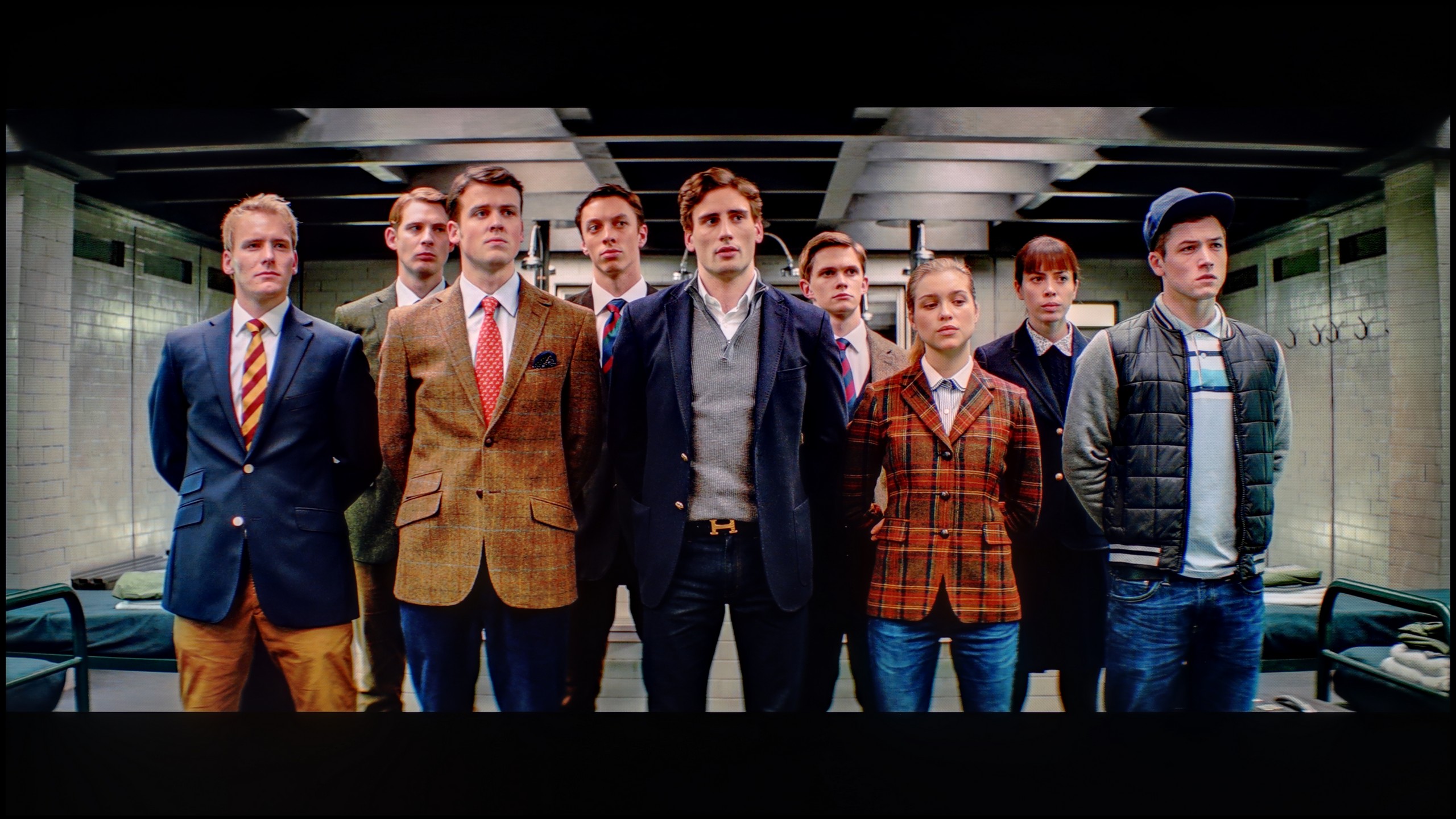

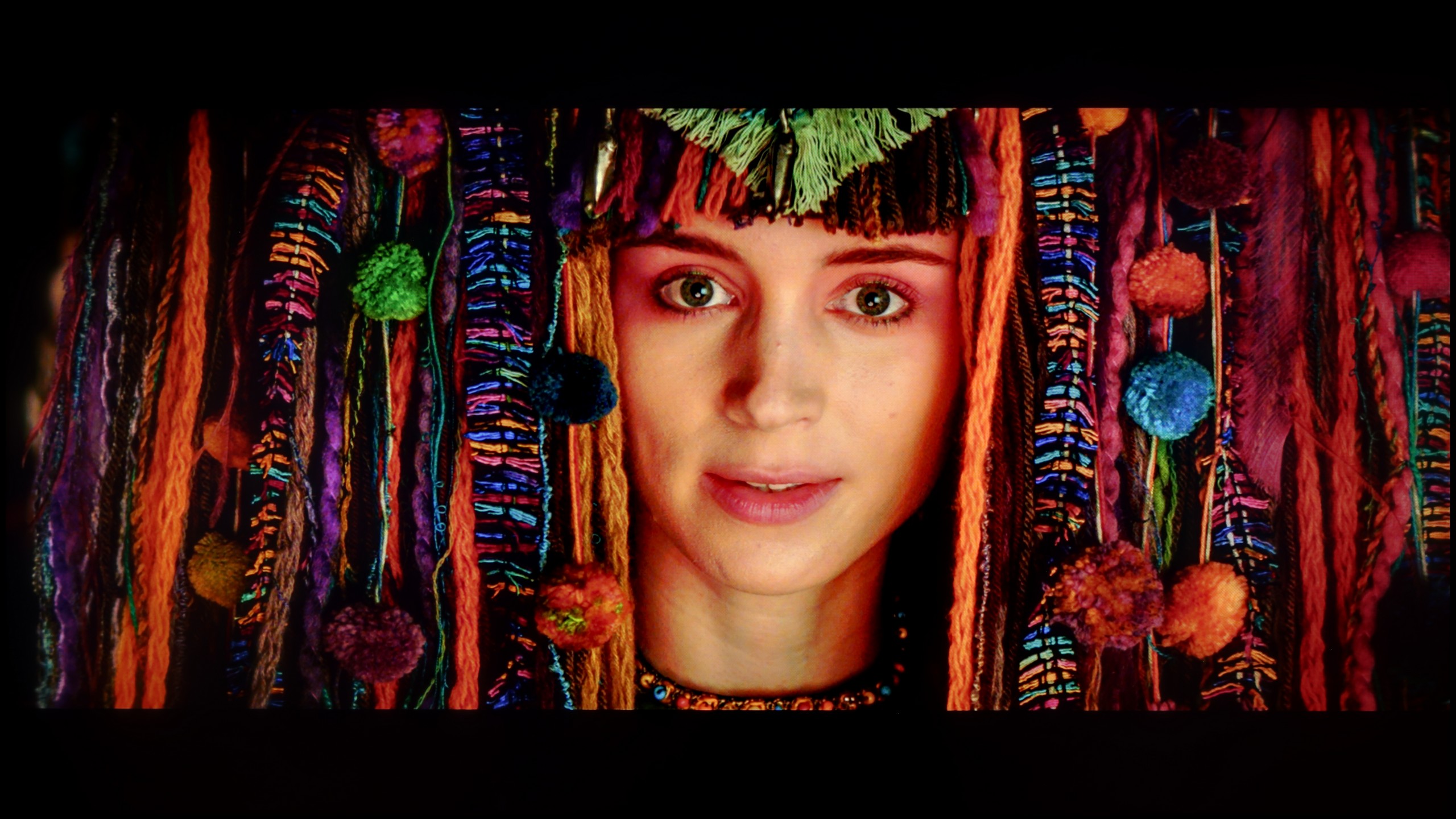
Thanks to the use of calibration tools offered by Sony X85L, it has been possible to significantly improve the image quality. After calibration, the white balance for HD content is much more stable, making colours look more natural and enhancing the authenticity of the image. Although it's not perfect, these changes allow viewers to enjoy a more realistic representation of colours, eliminating the earlier cool tone. The gamma, which already performed reasonably well, has been adjusted to an even better version. As a result, tonal transitions and brightness are more consistent, positively impacting the depth and detail of the image.
As for 4K content, despite efforts, the white balance still struggles with a lack of red, which can cause overly warm colours in some scenes. Synthetic tests showed that the EOTF curve in HDR is fairly stable, with a slight boost in mid-bright scenes. However, in actual film material, the TV can still be too bright with fine, light details, which is a result of the limitations of large local dimming technology.
Nonetheless, the calibration has brought significant benefits, particularly in terms of colour accuracy, improving overall image quality and providing a more natural and consistent directorial vision.
After calibration, the TCL C7K showed itself in a really good light, especially when it comes to SDR content. We managed to precisely tune the white balance, colour gamut, and brightness characteristics so that the colour errors on the ColorChecker palette fell below a value of 2. For the uninitiated – this is nearly a perfect result, which means that the image is very close to what the creators intended. Unfortunately, it was a different story with 4K HDR content. While we were able to slightly calm down the white balance and correct its earlier errors, it was still evident that the TV has some "MiniLED traits", particularly in brightness management. When we checked how the C7K handled the EOTF curve on real film scenes, rather than just on synthetic test patterns, it turned out that the screen still had a tendency to slightly brighten the entire image. This affects the overall experience – the black loses some depth, and the image becomes less contrasty than it should be. Despite these minor issues with HDR content, the overall reception of materials – especially in SDR – is really very good. After calibration, the C7K can display an image that can successfully compete with much more expensive models. Good colour tuning, natural skin tones, and pleasant brightness make movie watching and everyday content viewing more than satisfactory.
Smoothness of tonal transitions
7.1/10
8.6/10












The fluidity of tonal transitions in Sony X85L is at a good level – the colour gradation is smooth, even in more demanding areas, making the perception of scenes positive and natural. The biggest issues arise in shadow areas, where subtle colour joins can be visible. Despite this, the television performs well enough that most viewers should not notice these minor imperfections.
The TCL C7K performs very well with colour gradation – in most of the scenes tested, tonal transitions were smooth, and colours blended together without visible outlines or the artificial effect of "blotches". In everyday use, it's hard to find any faults – the picture looks natural, without jarring transitions or digital artifacts. Certain limitations only appear in very dark tones – especially in a heavily muted grey palette, where the television may struggle to reproduce the ideal gradation. But that’s absolutely understandable, as even many significantly more expensive models in this range simply can't cope. Fortunately, these situations are rare and don’t really affect the overall perception.
Image scaling and smoothness of tonal transitions
6/10
5.5/10
Smooth transition function


Image without overscan on the SD signal


In terms of smoothing tonal transitions, the Sony X85L television doesn’t offer any dedicated enhancement options, which is a bit of a downside. On the other hand, the image scaling performs quite well – the television adds a touch of artificial sharpness, which can make details such as tree branches more pronounced, although sometimes with visible jagged edges. This type of effect may appeal to some viewers who prefer a more detailed image.
TCL C7K has a feature that, according to the manufacturer, is meant to smooth out undesirable colour transitions – something like a rescue for less successful tonal shifts. It's called "Gradual Smoothing," and... well, it sounds ambitious, but in practice, it works very poorly. Regardless of whether we set it to low or high, the difference is minimal. Worse still – the feature can cut out elements from the image that should remain. Fortunately, film grain remains untouched, so at least it doesn't smooth everything indiscriminately, but even so – it's better to simply turn this option off.
When it comes to upscaling lower resolution content, it's already better. SD and HD materials look quite decent, although at times we had the impression that the image loses sharpness and becomes too soft – as if something took away its clarity. Fortunately, with very low sources (e.g., 576p), there was no overscan effect, meaning the image wasn't artificially cropped – everything fit on the screen as it should.
Blur and motion smoothness
8/10
7.5/10

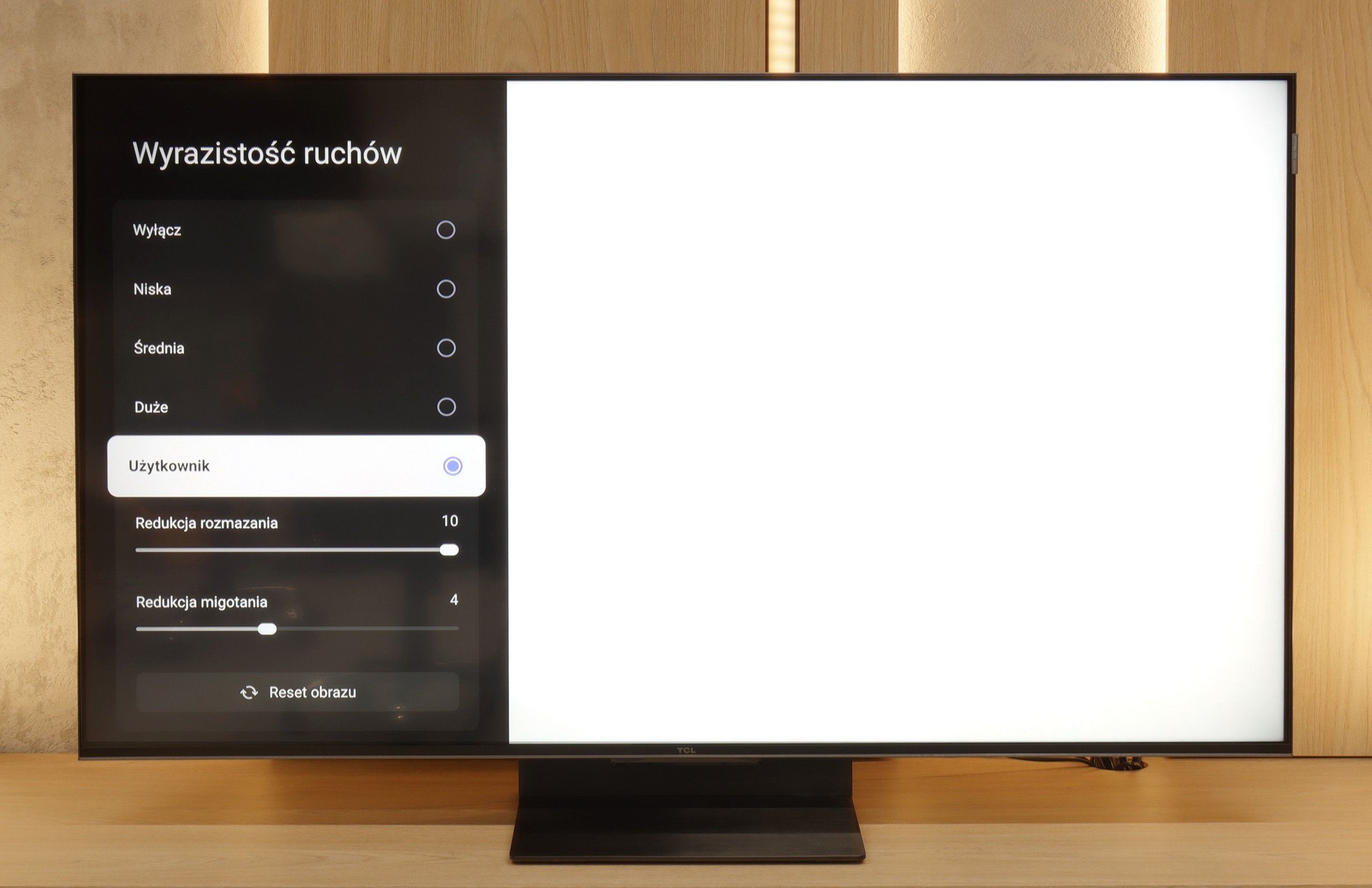
Blur (native resolution, maximum refresh rate):





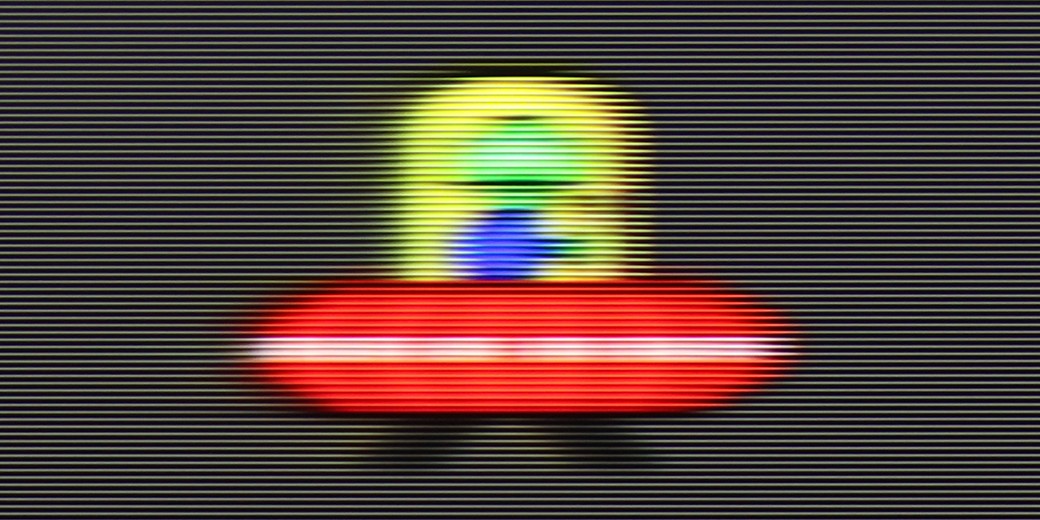
Blur (BFI function enabled):






Smużenie ():
Smużenie (4K 144Hz):



Sony X85L, equipped with a 120 Hz panel, will meet the expectations of a wide range of users – from sports and gaming fans to movie enthusiasts. Movie lovers will surely appreciate the presence of one of the best motion smoothing systems, known as Motionflow. This system offers adjustment using smoothness and clarity sliders – smoothness is responsible for fluid motion, eliminating the stuttering effect, while clarity enhances the sharpness of fast scenes, reducing blur.
TCL C7K handles motion fluidity really well. The panel it uses offers a refresh rate of 144 Hz, which suggests that this TV is more than just a standard "60 Hz" panel. Furthermore, if we connect the C7K to a computer and set the resolution to Full HD. But we will write more about this in the paragraph on gamers and PC compatibility. Returning to everyday use – both sports and movies look very good here. Thanks to the fast panel and the well-functioning motion smoother, the C7K is great for watching matches, but also for movie screenings. In the menu, we find two sliders – motion blur reduction and flicker reduction – that allow you to adjust the fluidity effect to your own preferences. At lower settings, we get a more cinematic effect, with slight judder. At higher settings – the image becomes more theatrical, fluid to the point of excess. Whatever your preference – everyone can set it their own way.
Console compatibility and gaming features
7.8/10
9.8/10
- ALLM
- VRR
- VRR range48 - 120Hz48 - 144Hz
- Dolby Vision Game Mode
Yes, high input lag
- Correct implementation of HGIG
- 1080p@120Hz
- 1440p@120Hz
- 4K@120Hz
- Game bar

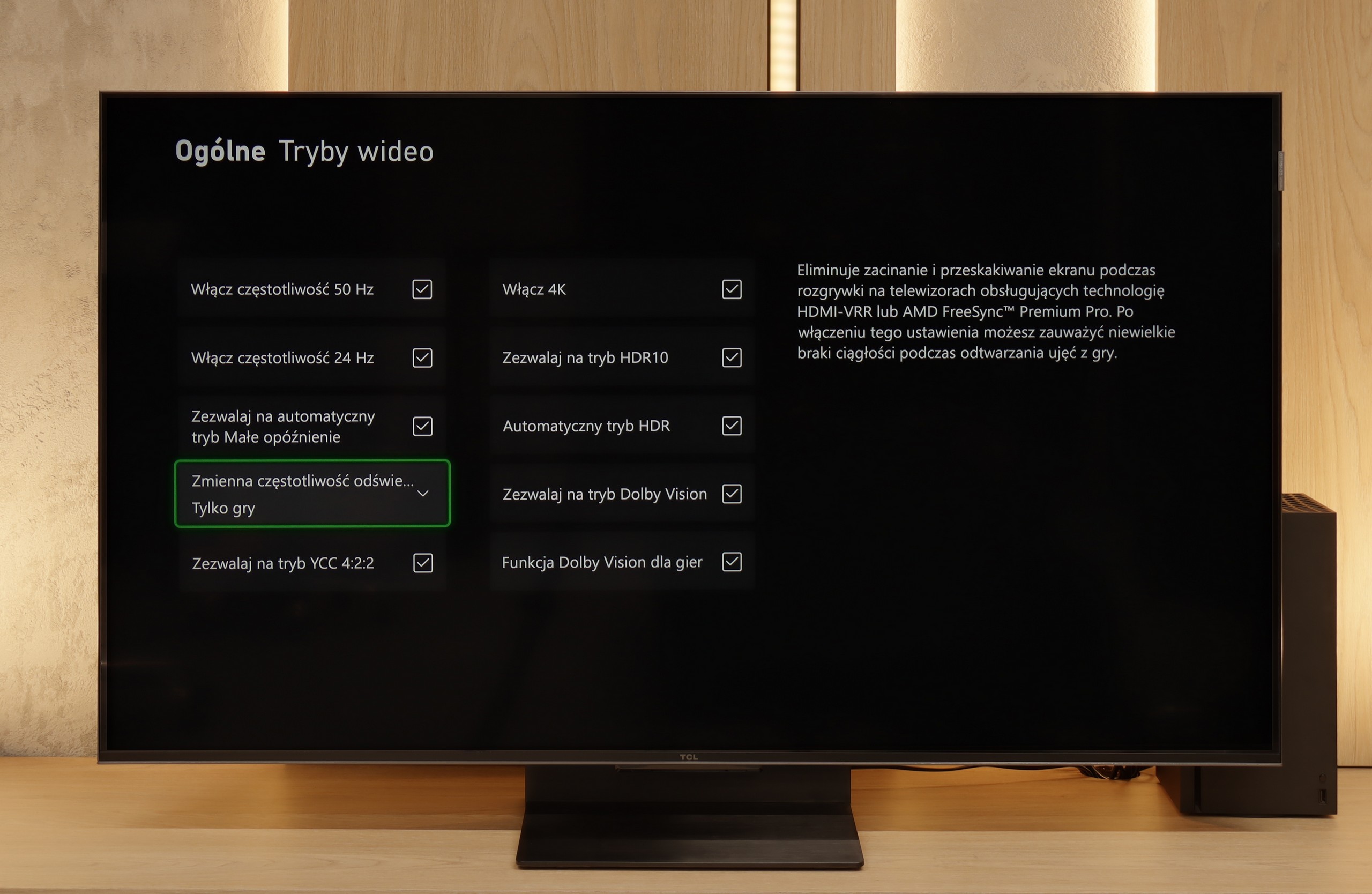

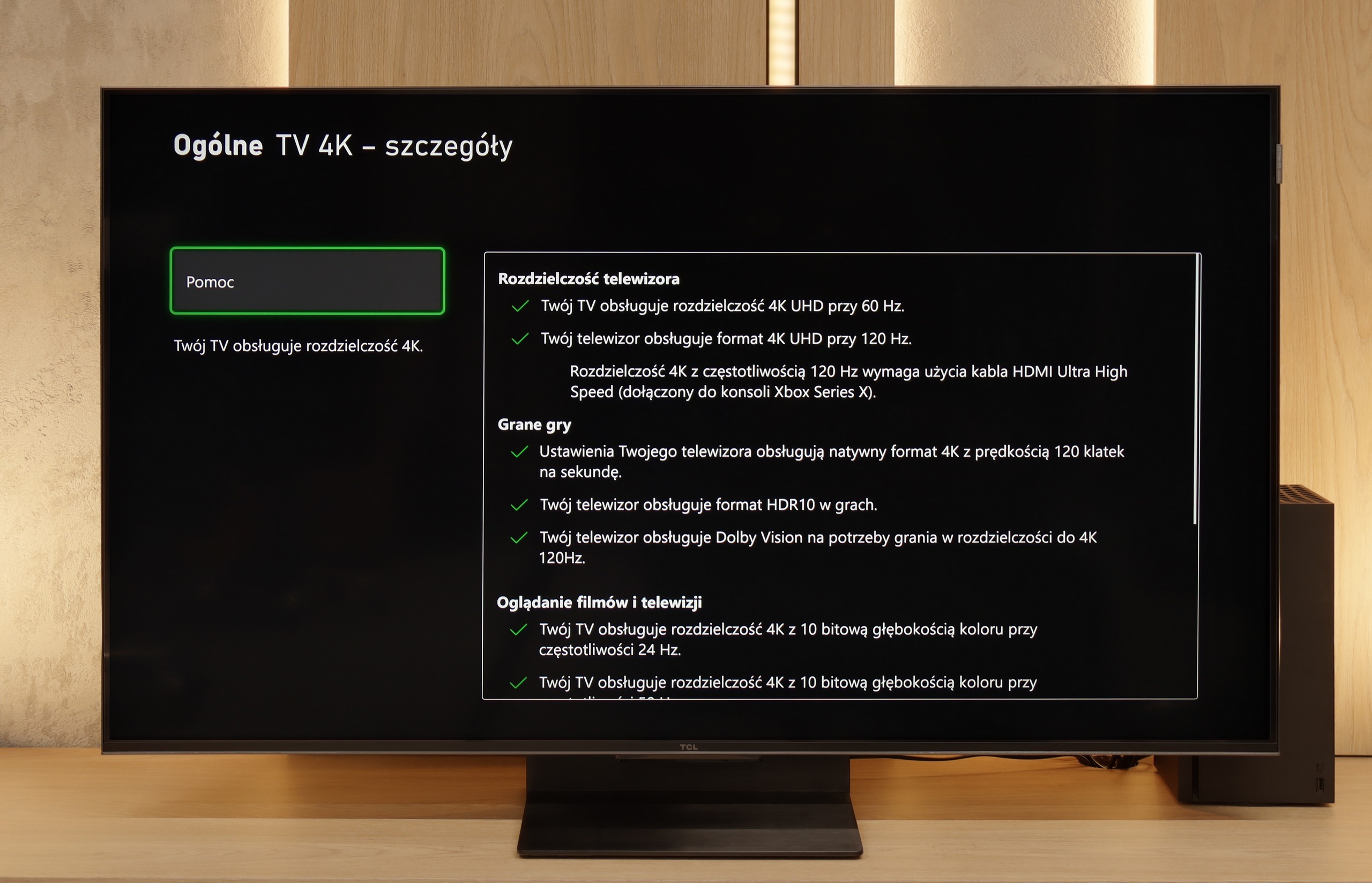

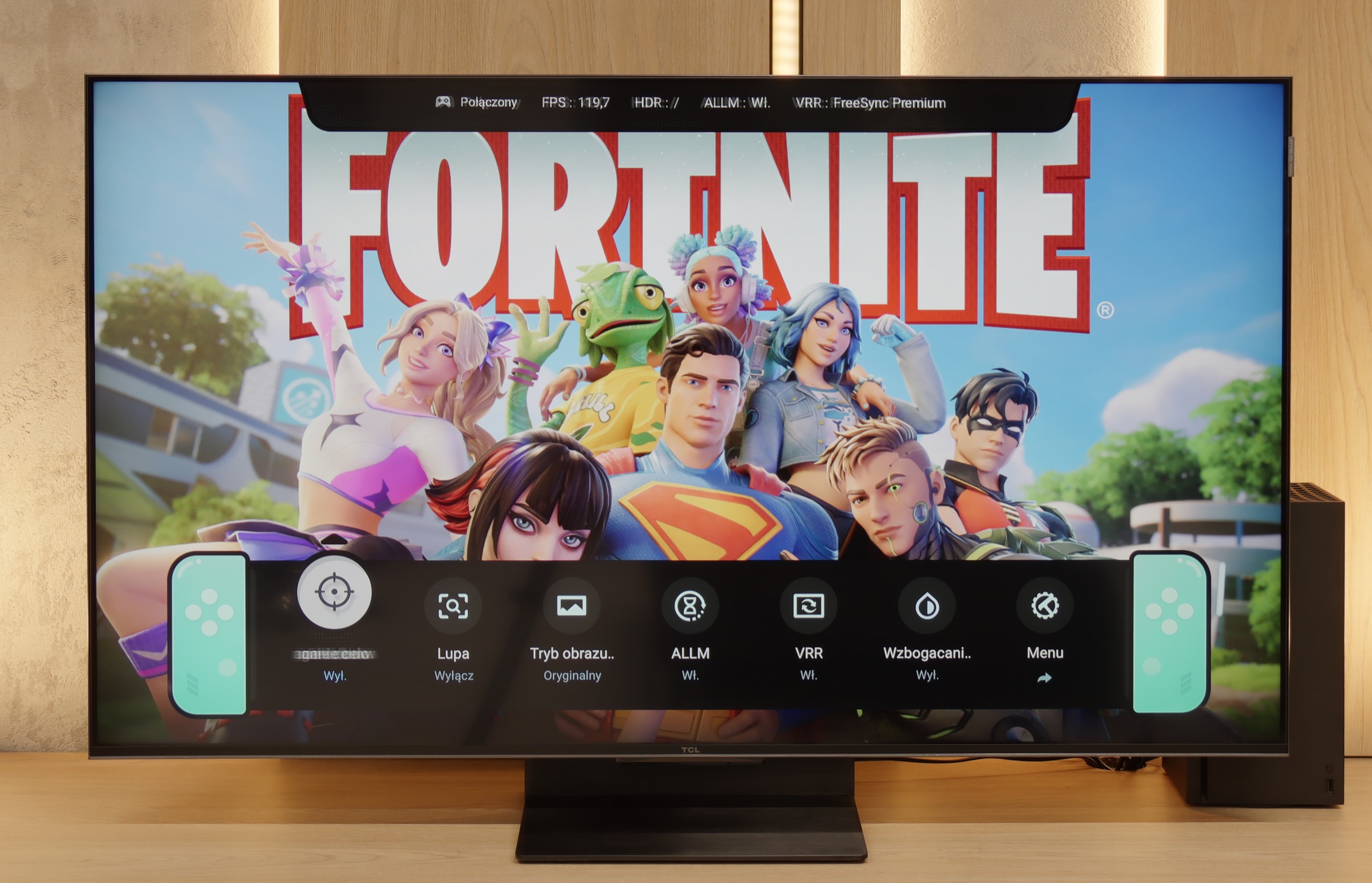

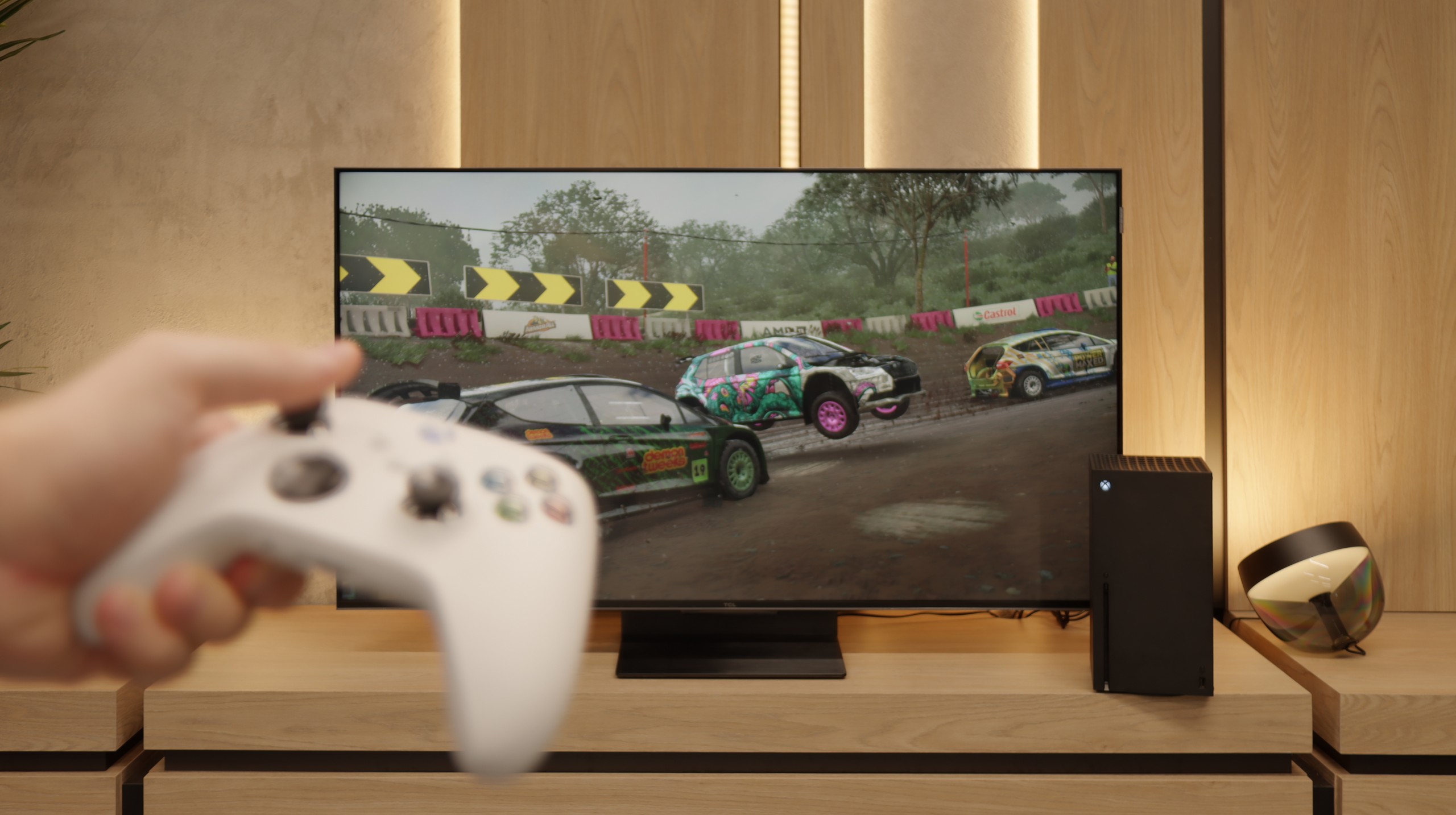
Sony X85L offers a fairly solid set of features for gamers, making it an attractive choice for gaming enthusiasts. First and foremost, the television has a 120 Hz panel, which translates to smooth and dynamic image display, ideal for both fast-paced action games and more demanding sports titles. It is equipped with two HDMI 2.1 ports with full bandwidth of 48 Gb/s, allowing for the full capabilities of next-generation consoles to be utilised. Additionally, Sony X85L supports VRR (variable refresh rate) technology, which helps reduce stuttering and artifacts during gameplay, ensuring a smooth experience. The television also supports G-Sync, which is particularly beneficial for gamers using NVIDIA graphics cards, allowing for screen refresh rate synchronization with GPU performance, eliminating screen tearing. It’s worth mentioning the Game Bar feature, which facilitates quick access to important game-related settings, such as VRR, brightness levels, or display modes, making it convenient and useful during gameplay.
However, there are some limitations. The television does not support HGiG, which may be a downside for some gamers, as HGiG optimises HDR effect rendering in games, providing a more authentic visual experience. Additionally, the Dolby Vision mode, although available, is not practical for gaming due to very high input lag.
TCL C7K is a television that on paper looks like the perfect equipment for gamers – and most importantly, it performs well in practice too. Here's some good news: we have two full-bandwidth HDMI 2.1 ports, so we can easily connect both a console and a computer, using all their capabilities. The panel itself supports a refresh rate of 144 Hz, which provides a significant advantage in dynamic games. Additionally, it comes with a full set of gaming features: VRR (variable refresh rate), ALLM (automatic low latency mode), and support for Dolby Vision in games. There's also an HGiG mode that allows for HDR effects that align with the creators' intentions. GameBar, which is an information bar for gamers. It operates quickly, looks clear (like a Nintendo console👌), and shows what's most important: the current frame rate, VRR status, and even HDR parameters.
Input lag
9.1/10
9.7/10
SDR
HDR
Dolby Vision
Generally speaking, the input lag on the Sony X85L is very good, which is crucial for smooth gameplay and quick reactions in games. In standard modes, particularly when using HDMI 2.1 and playing at 4K resolution at 120 Hz, the input lag is minimal.
Unfortunately, the Dolby Vision mode is an exception to this rule. In this case, the input lag reaches as high as 95 ms. Such a high level of latency makes the Dolby Vision mode practically unplayable, as responses to commands are noticeably delayed.
When it comes to delays, the C7K gives no reasons to complain. In games at 120 Hz, the input lag is around 10 ms, which means that the TV responds really quickly. Interestingly, even in Dolby Vision mode, the result is very similar, which isn't always the case. Good job, TCL. At 60 Hz, the lag does increase a bit, but that's completely normal and applies to pretty much every TV with a refresh rate of 120Hz and above. The most important thing is that everything still runs smoothly and there's no feeling that something isn't responding to our actions.
Compatibility with PC
5.6/10
8.4/10

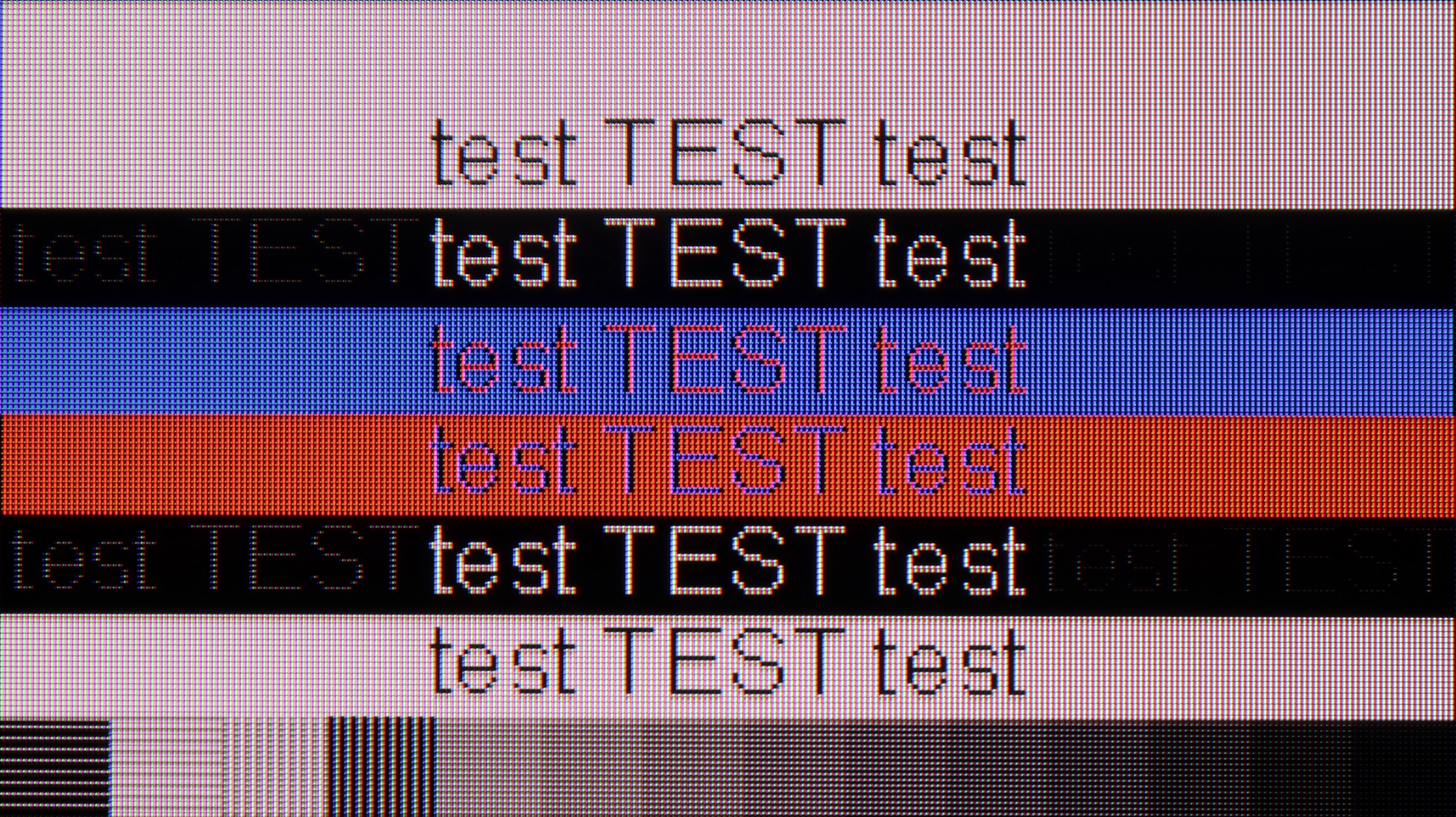
The collaboration of the television Sony X85L with a PC involves a bit of balancing between image quality and user comfort. If we want to use the TV for work, where clear fonts matter, we need to set the refresh rate to 60 Hz. In this mode, text looks good and doesn't strain the eyes, which is crucial if we plan to spend a longer time in front of the screen.
On the other hand, if the TV is intended for gaming, where we can take full advantage of its capabilities at 120 Hz, we must consider that the readability of the fonts noticeably decreases. The image becomes less sharp and the text harder to read, which can be frustrating. In short – Sony X85L works well for occasional connection to the computer, but if we need it daily for work and gaming, this compromise may not appeal to everyone.
If we plan to connect the C7K to a computer – especially for gaming – there's definitely a lot to play with. We have 4K at 144 Hz, which already sounds great, but if we drop the resolution, the TV can even display 280 Hz. In e-sports, where every split second counts, this really makes a difference. On top of that, it supports G-Sync and FreeSync, so no matter what graphics card we have – the image will be smooth, with no stuttering or tearing.
But if we plan to put the C7K on a desk and use it like a monitor, it's a bit less "rosy." Sure, it supports chroma 4:4:4, so fonts should be sharp, but with very dark letters, you can notice slight blurriness and edge dimming. It's not something that immediately stands out during gaming or watching, but when working with text – it can be distracting. In everyday use – relatively worry-free, but if we plan to have a 50-inch screen a metre from our face, it's worth keeping this in mind.
Viewing angles
3/10
3/10
Viewing angles on the Sony X85L, as is often the case with VA panels, are not the best. The picture looks great when you’re watching the TV head-on, but all it takes is a slight shift to the side to notice that the colours lose their vibrancy and the contrast noticeably weakens. This could be a problem if the TV is meant for watching in larger groups, where viewers are seated at different angles. For those who typically watch solo or from one central spot, it won't be a major downside, but the picture quality unfortunately drops when watching from the side.
There's no surprise here – the C7K has classic viewing angles for a VA panel. That is: we sit directly in front – it's excellent. Colours look good, contrast is strong, everything is in place. But just shifting slightly to the side starts to make things worse – the image loses saturation, the blacks turn grey, and the overall impression diminishes a bit. So if we plan to watch together with a few people or have a sofa that takes up half the lounge – it’s worth seating everyone more centrally. You can watch from the side, but don’t expect miracles – it’s simply a characteristic of the VA panel.
TV efficiency during daytime
6.5/10
6.1/10




Matrix brightness
Average luminance SDR
TCL C7K / QM7K: 475 cd/m2
Sony X85L: 571 cd/m2
The performance of the television Sony X85L during the day is quite decent. Its satin screen coating handles light reflection moderately well, which means that in bright rooms there may be some glare, but it is not bothersome enough to significantly interfere. The brightness in SDR mode at 570 nits is sufficient for comfortably watching TV during the day, even with natural light coming in through the windows. This ensures that colours remain vibrant and the picture is clearly visible, making the television suitable for everyday use.
Luckily, the TCL C7K performs quite well in bright rooms. The applied panel has a satin finish that effectively reduces reflections, so even on sunny days we don't have to worry about reflections from lamps or windows. Importantly, the colours maintain their intensity and don't wash out, as can happen with weaker matte panels. As for brightness, the average for content like YouTube or regular television reaches just below 500 nits. It's not a record result – for example, the MQLED85 (C765) performs better in this regard. However, for everyday viewing during the day, it should work without major issues, as long as we don't plan to place it opposite a south-facing window without curtains.
Details about the matrix
Subpixel Structure:

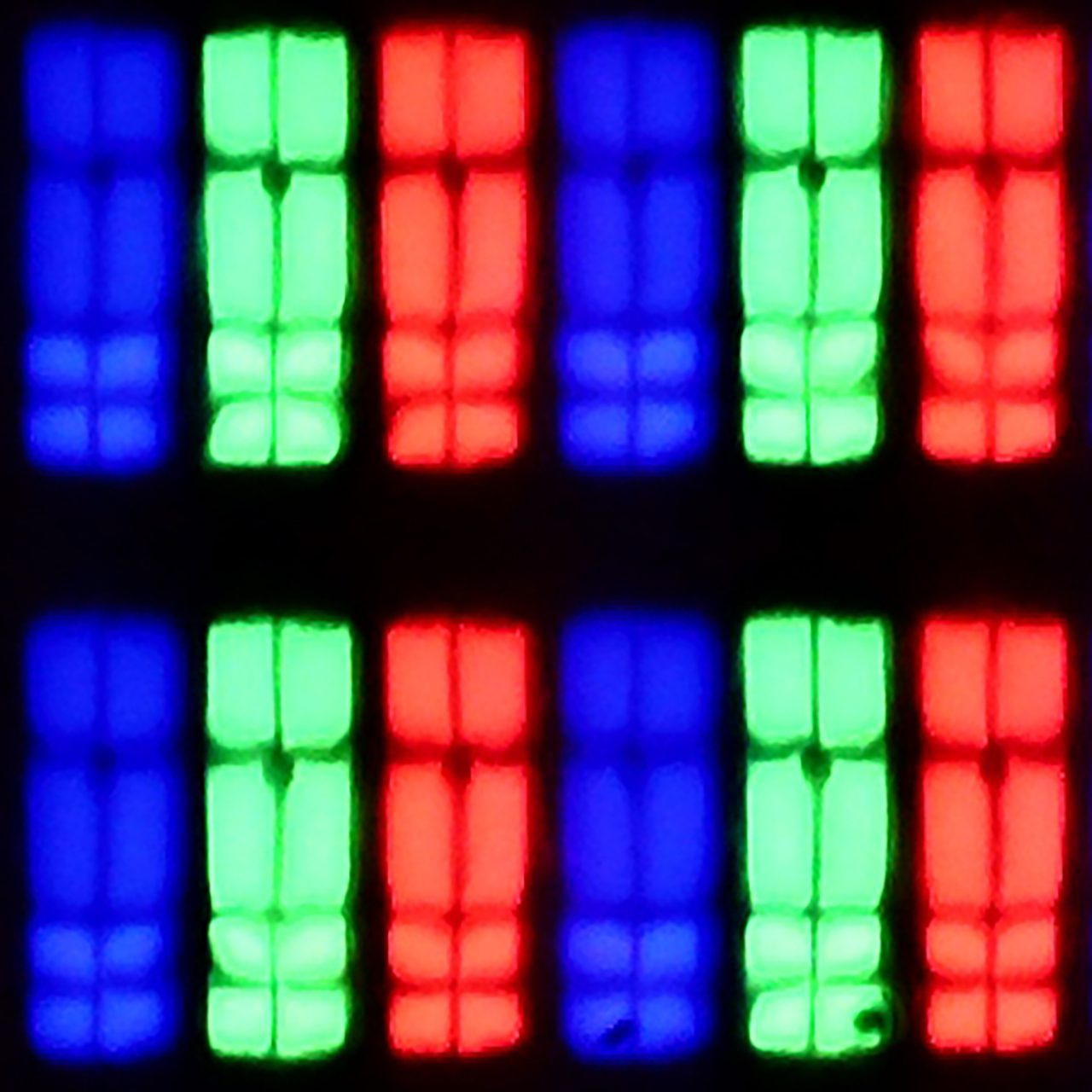
Panel uniformity:

TV features
8.3/10
7.7/10
- HDMI inputs2 x HDMI 2.0, 2 x HDMI 2.1 48Gbps2 x HDMI 2.0, 2 x HDMI 2.1 48Gbps
- Other inputsRCA (Chinch)
- OutputsToslink (Optical audio), eARC (HDMI), ARC (HDMI)Toslink (Optical audio), eARC (HDMI), ARC (HDMI)
- Network InterfacesWi-Fi 2.4GHz, Wi-Fi 5GHz, Ethernet (LAN) 100MbpsWi-Fi 2.4GHz, Wi-Fi 5GHz, Ethernet (LAN) 100Mbps
- TV receptionDVB-T, DVB-T2, DVB-S, DVB-S2, DVB-CDVB-T, DVB-T2, DVB-S, DVB-S2, DVB-C
Classic features:
- Recording to USB (terrestrial TV)
- Recording programming
- Picture in Picture (PiP)
- RF remote control (no need to aim at the screen)
- Backlit remote control
- Teletext
- Audio only mode
- Possibility to connect Bluetooth headphones to the TV
- Possibility to simultaneously use Bluetooth headphones and the TV speaker
Smart features:
- AirPlay
- Screen mirroring (Windows Miracast)
- Wyszukiwanie głosowe
- Voice search in native language
- Ability to connect a keyboard and mouse


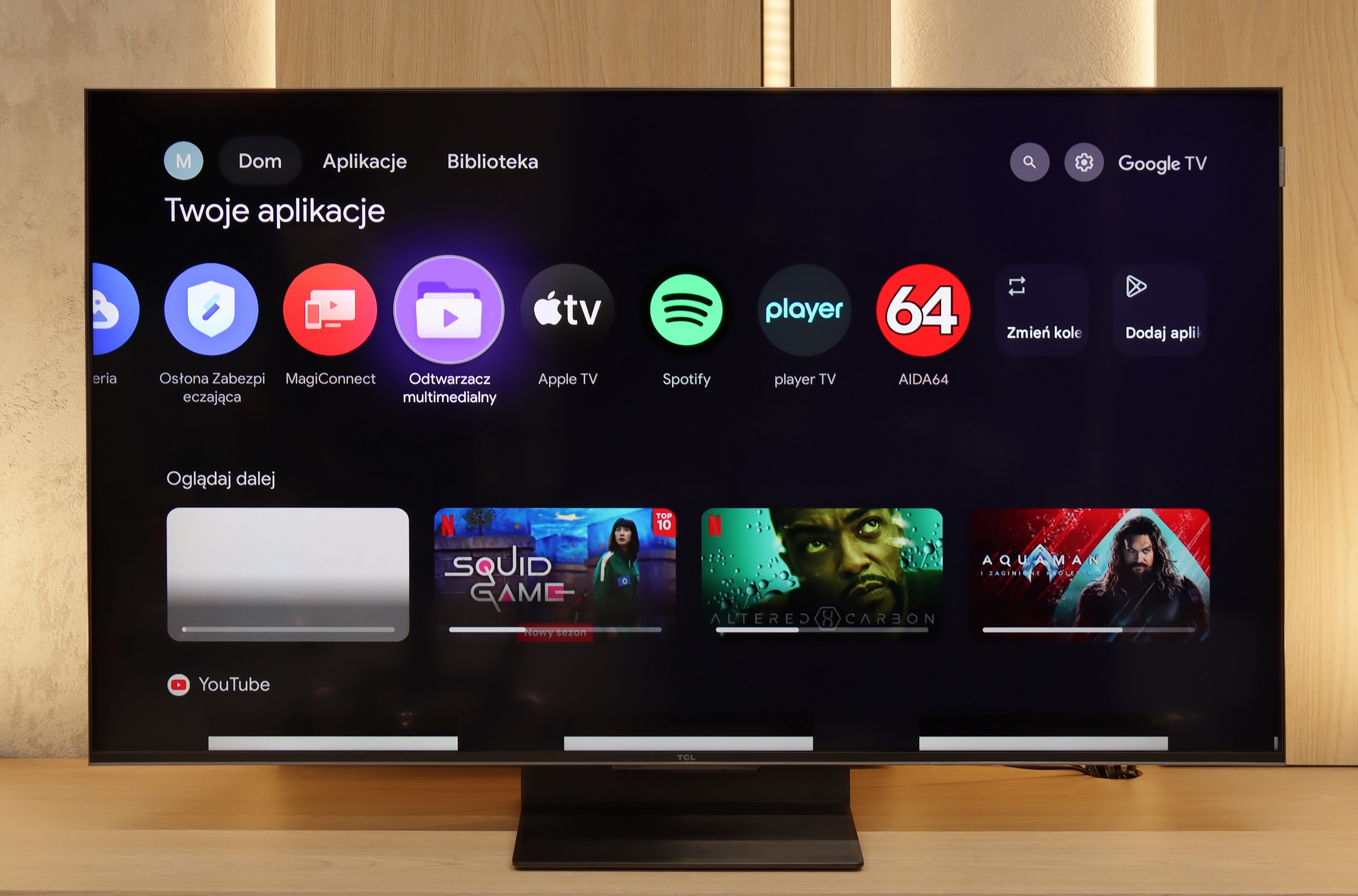
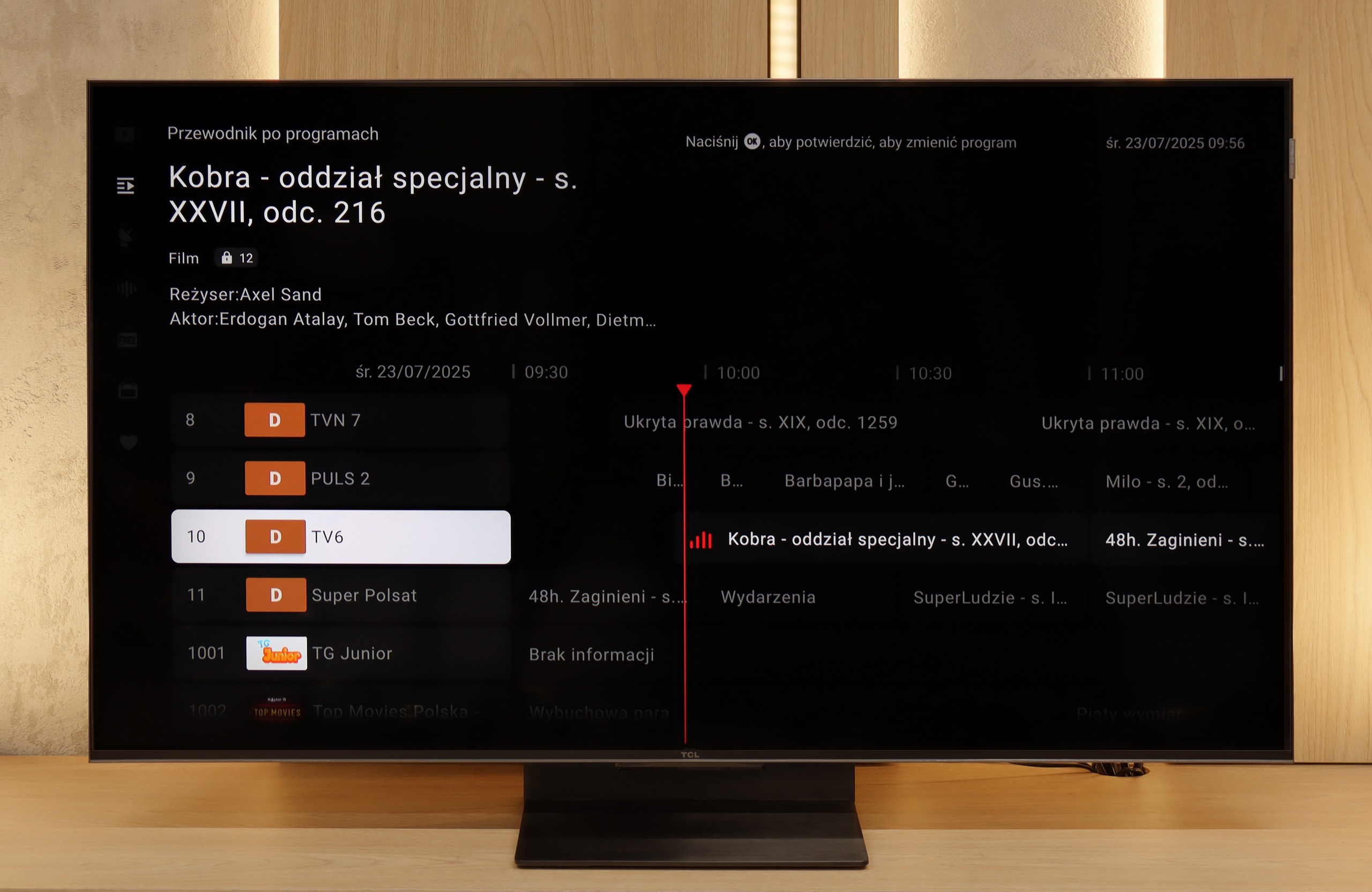
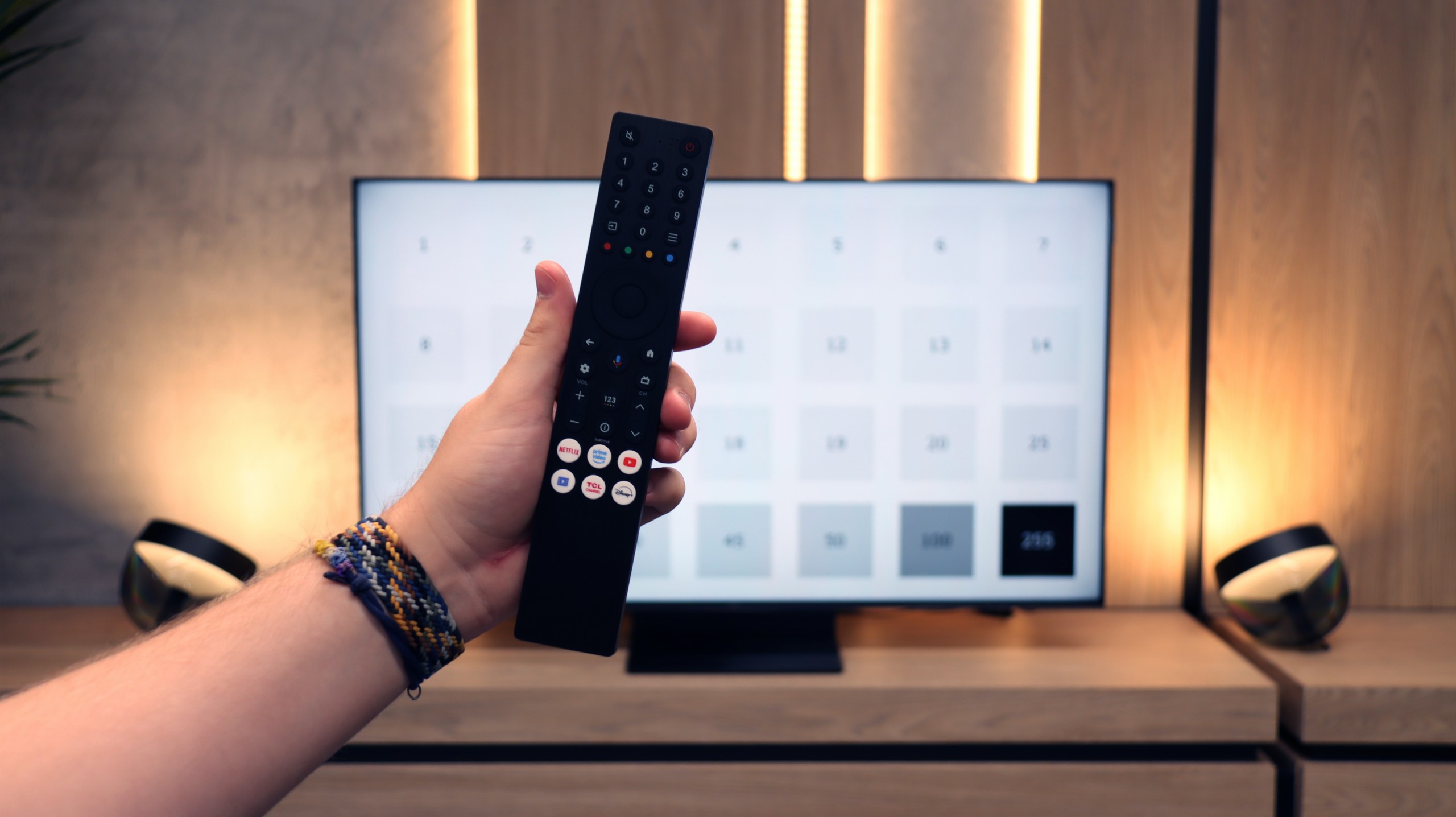
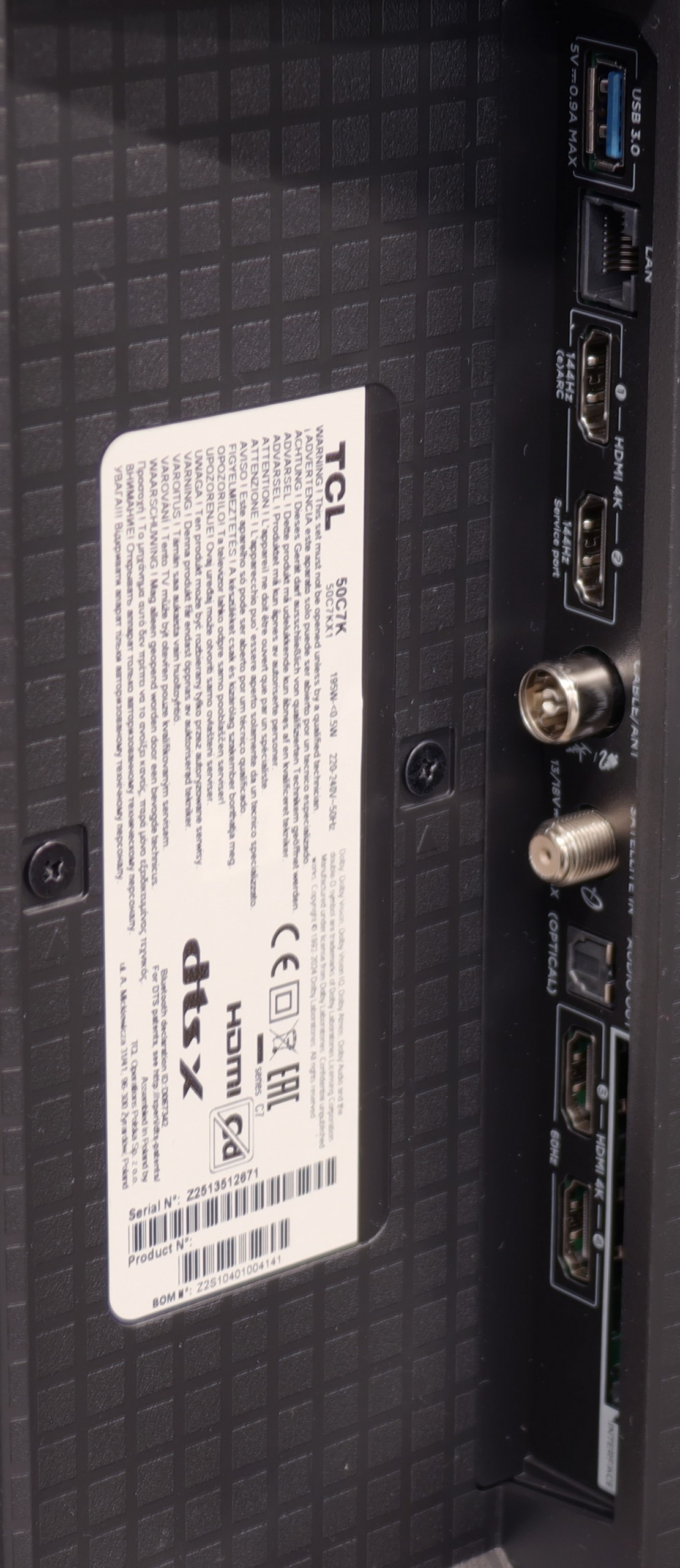
Sony X85L operates on the Google TV system, which is a significant advantage for many users. The television offers wide access to apps, and using streaming platforms is smooth and user-friendly. The interface is intuitive and easy to master, allowing for quick switching between apps and searching for favourite content. Google TV allows for personalization of the home screen, enabling each user to tailor it to their preferences. Google Assistant further enriches the experience by offering voice control and quick changes to settings or searching for films without using the remote.
In terms of user features, Sony X85L offers many useful options. The television has the capability to record programs, which is a great convenience for those wanting to watch their favourite content at any time. AirPlay support allows seamless streaming of content from Apple devices, which iPhone and iPad owners will appreciate. In addition, with built-in Bluetooth, various devices such as headphones or keyboards can be connected. However, one drawback is the absence of the PiP (picture in picture) function, which may disappoint users who prefer multitasking on the screen.
The design of the Sony X85L TV, while perhaps not the slimmest, is sturdy and elegant. The metal base with adjustable legs is one of its strong points, allowing for the height and width of the television to be adjusted to fit various furniture and spaces. This practical solution enhances the interior and adds a modern character to it.
SmartTV: GoogleTV
The biggest strength of the TCL C7K in everyday use is undoubtedly the Google TV system. It is thanks to this that we have access to an almost endless library of applications, including some more niche ones that are often unavailable on other platforms. The built-in Google Assistant understands Polish, so we can easily ask what is on TV, what the weather is like, and even give a few voice commands to control the television. The presence of Chromecast and AirPlay, which work smoothly and make life easier, is also a plus.
Usability Features
However, the traditional functions are a bit lacking. Of course, we have the basics – teletext, EPG, or the ability to connect headphones – but that’s pretty much where it ends. There's a lack of USB recording features or picture-in-picture (PiP) mode, which can still be found among competitors. It's also worth remembering that Google TV in the TCL version sometimes has strangely translated menu sections or minor interface errors. These aren’t issues that hinder daily use, but detail-oriented individuals may notice them.
Playing files from USB
8.7/10
9.2/10
Supported photo formats:
Maximum photo resolution:


Sony X85L handles playback of most popular file formats from USB without any issues, which is a big plus for those who often access external content. However, it's worth mentioning a minor drawback – the built-in player does not allow for changing the font colour in subtitles, which may be troublesome for some. Fortunately, thanks to the extensive Google TV system, users have a wide range of options. Alternative media players can be easily installed, offering more personalisation options.
The built-in file player in the TCL C7K performs really well. It supports most popular audio and video formats, so if we want to quickly plug in something from a USB drive and get it going – there shouldn't be any problem. Of course, as is often the case, you can find some minor shortcomings – not every exotic codec will work (Apple's HEIC), not all subtitles will be perfectly synchronised (txt.). However, the biggest advantage of this television comes to the rescue, which is Google TV. With access to the Google Play Store, we can easily install an alternative player, such as VLC, and then no files will frighten us.
Apps
9.6/10
9.6/10














































Sound
6.9/10
7/10
- Subjective sound quality:6.9/107/10
- Dolby Digital Plus 7.1:
- Dolby True HD 7.1:
- Dolby Atmos in Dolby Digital Plus (JOC):
- Dolby Atmos in Dolby True HD:
- DTS:X in DTS-HD MA:
- DTS-HD Master Audio:
The sound on the Sony X85L is good – it's clear across the entire scale, allowing enjoyment of both dialogue and music. The bass, though light, is noticeable and adds some depth to the overall sound. However, it should be emphasised that this is a subjective assessment – some may be satisfied with this sound profile, while others might require additional audio equipment to fully experience the stronger tones and a more spacious sound.
To be honest, we didn't expect much from the sound of the 50-inch version of the C7K model. Usually, in such sizes, it's hard to find anything more than thin, flat sound. But here – a pleasant surprise. The sound turned out to be really enjoyable, with good clarity and even a subtly noticeable bass. This is probably linked to TCL's new collaboration with the Bang & Olufsen brand, which is a novelty for 2025. Whether the C7K actually contains original drivers from the Danish premium brand – we can't confirm that. But the end result still deserves a thumbs up. For a TV without a soundbar – it sounds quite nice.


